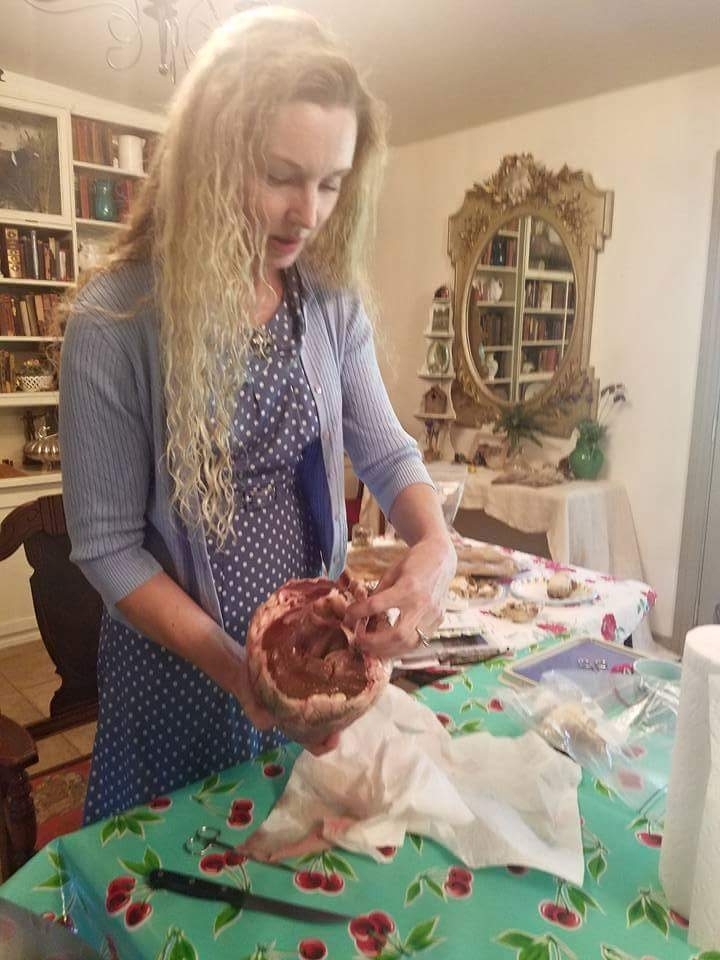I’ll start right off the bat with a piece of advice: be flexible. You are the scheduling boss. Nothing is set in stone.
It may seem counterintuitive that the first key to a schedule is willingness to let go of a schedule, but it’s true. Repeat after me: “The schedule does not dictate my days.”
When we first started homeschooling, I was all about making it a school-away-from-school. We had a designated classroom, complete with old-fashioned school desks and a large marker board (simply because I couldn’t find a large enough chalkboard, which would have been my aesthetic preference). I crafted my schedule, and we stuck to it, even without a bell to enforce the start of each class period.
Fast forward 12 years. Now we work at the dining room table, often in our nightclothes (or swimsuits in late summer). I use a checklist of subjects, rather than a rigid hourly schedule.
It may seem counterintuitive that the first key to a successful homeschooling schedule is willingness to let go of a schedule, but it’s true. Click To TweetThese changes didn’t happen overnight, of course. I learned to loosen up as we went along. And, if anything, I truly feel we are more productive now, and have more fun to boot. We’re not just learning, we’re also memory-building.
I plan at least one light day for our week. Most field trips and other extracurricular activities get scheduled for Fridays, when possible. Even on non-field-trip-Fridays, we spend less time working and more time on letter-writing and art lessons.
Every once in awhile, we also totally change it up. Sticking to the same schedule day in and day out gets boring. Spice it up. Do school outside at a patio table, or read aloud in a hammock. Instead of just perusing a book about Picasso, go to a local art museum and experience art with your own eyes. Instead of reading a book about jellyfish, visit an aquariumso you can experience these creatures yourself.  Don’t let a schedule drive you and your kids to utter boredom. Branch out.
Don’t let a schedule drive you and your kids to utter boredom. Branch out.
When I plan my schedule for the upcoming school year, I start with the basic questions. What subjects are my kids taking? For example, last year my oldest son was a high school freshman. These are the subjects he took: Bible, Algebra, Biology, US History, Typing, Literature & Writing, Spanish, Art.
Next, I decide how often each subject will be covered. We did Bible, Algebra, and Literature/Writing every day. Biology was covered two times a week, with one of the days spent at our local biology co-op lab class. History was also a twice weekly class. Typing and Spanish have shorter instruction times and were covered three times a week. Art is a daily thing in our home, but doesn’t always consist of formal instruction.

Write out your list of days on a notebook page, and plug in your subjects. If you’re not a notebook scribbler, like I am, you could write each subject on an index card. For example, if you’ll do history three times a week, write it on three cards. You could label each index card with a day of the week, or keep things even more flexible, by shuffling subjects around. Your kids have to get through the entire stack of index cards in a school week, but together, you can pick and choose their lessons for the day from the stack of remaining cards. Remember to also add in your outside obligations, like piano lessons, Tae Kwon Do, or whatever your kids extracurricular activities are.
As long as everything is checked off, I don’t care about the order in which it’s accomplished.
We use Saxon for math, and I aim to do one lesson per day. Easy-peasy scheduling.
He used Apologia biology, and we covered a chapter a week. The chapters are long and dense, so it pays to read a little bit every day. However, he is 15, and can plan out his own reading. If he chooses to cover it in 2 days, per the schedule, that’s fine by me, as long as he is retaining the material. His biology lab class was amazing, taught by our very own A Reason For homeschool mama Samantha. 
The most time-consuming thing for me is math. I work with each child individually, so it takes most of my day. When I’m doing math with the 5th grader, I expect the other three kids to be independently working on their reading, A Reason For Handwriting, typing, and so forth. This works well for us.
We do most history lessons together, after everyone has completed math-with-mom and their other studies.
Each family’s day will look different; after all, we have different goals, personalities, and educational philosophies. There isn’t a cookie-cutter method for this. Get ideas from other families like yours as a starting place, and tweak as necessary! Remember to have fun with it.
“Education Is Not the Filling of a Pail, But the Lighting of a Fire” William Butler Yeats (Poet, 1865-1939)

THANK YOU! It is so helpful to hear that we don’t need to recreate a public school classroom at home. I think those kinds of misconceptions scare off a lot of people who’d want to homeschool otherwise, and also STRESS OUT a lot of those who actually take the plunge!